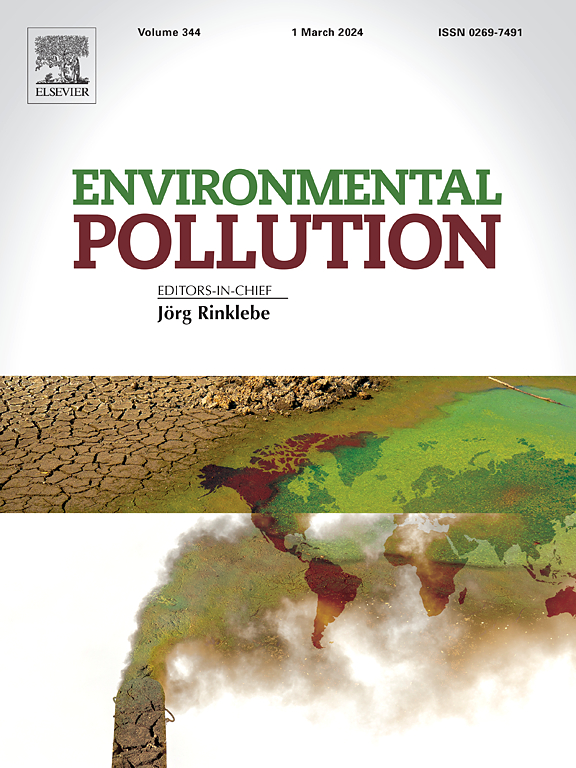Attending to the effects of outdoor temperature on blood pressure: multicenter study based on ambulatory monitoring
IF 7.6
2区 环境科学与生态学
Q1 ENVIRONMENTAL SCIENCES
引用次数: 0
Abstract
Sudden fluctuations in blood pressure (BP) over a short period may trigger cardiovascular events, and outdoor temperature may be a risk factor. There is a lack of conclusive observational evidence linked hourly temperature with ambulatory BP indicators. We aimed to explore the effects of hourly outdoor temperature on ambulatory BP, BP variability and load. A large-scale, multicenter study among 31,838 adults from 7 Chinese cities was conducted between March, 2016 and November, 2020. Hourly temperature was obtained from the nearest weather stations. We collected ambulatory systolic (SBP), diastolic blood pressure (DBP), the BP variability and load of the day, and used linear mixed-effect model combined with distributed lag models to analyze data. Outdoor temperature was inversely associated with most ambulatory BP indicators. The effects of low temperature on BP appeared and peaked at the concurrent hour, then gradually attenuated and disappeared around at lag 20h. Compared to the referent temperature (P99), exposure to low temperature (P1) was associated with cumulative increments (over lag 0 to 20 h) of 9.71 mmHg, 4.85 mmHg and 20.58 mmHg for 24-hour, nighttime and morning SBP, respectively, as well as 8.71 mmHg, 4.72 mmHg and 14.32 mmHg for 24-hour, nighttime and morning DBP. Furthermore, there were significant associations between decreasing temperature and increased BP variability and load at lag 0 d. Our study provides compelling evidence that low temperature can elevate BP-related indicators, underscoring the necessity of flexible treatment strategies and targeted public health interventions, especially for susceptible populations during the cold season.

关注室外温度对血压的影响:基于动态监测的多中心研究
短时间内血压的突然波动可能引发心血管事件,室外温度可能是一个危险因素。目前还缺乏将每小时温度与动态血压指标联系起来的确凿观测证据。我们的目的是探讨每小时室外温度对动态血压、血压变异性和负荷的影响。2016年3月至2020年11月,研究人员对来自中国7个城市的31838名成年人进行了一项大规模、多中心的研究。每小时的气温是从最近的气象站取得的。收集患者当日动态收缩压(SBP)、舒张压(DBP)、血压变异性和负荷,采用线性混合效应模型结合分布滞后模型对数据进行分析。室外温度与大多数动态血压指标呈负相关。低温对血压的影响在同期h出现并达到峰值,滞后20h左右逐渐减弱并消失。与参考温度(P99)相比,暴露于低温(P1)与24小时夜间和早晨收缩压分别为9.71 mmHg、4.85 mmHg和20.58 mmHg的累积增量(滞后0至20小时)以及24小时夜间和早晨舒张压8.71 mmHg、4.72 mmHg和14.32 mmHg相关。此外,温度降低与滞后0天血压变异性和负荷增加之间存在显著关联。我们的研究提供了令人信服的证据,表明低温可以提高血压相关指标,强调了灵活治疗策略和有针对性的公共卫生干预的必要性,特别是对于寒冷季节的易感人群。
本文章由计算机程序翻译,如有差异,请以英文原文为准。
求助全文
约1分钟内获得全文
求助全文
来源期刊

Environmental Pollution
环境科学-环境科学
CiteScore
16.00
自引率
6.70%
发文量
2082
审稿时长
2.9 months
期刊介绍:
Environmental Pollution is an international peer-reviewed journal that publishes high-quality research papers and review articles covering all aspects of environmental pollution and its impacts on ecosystems and human health.
Subject areas include, but are not limited to:
• Sources and occurrences of pollutants that are clearly defined and measured in environmental compartments, food and food-related items, and human bodies;
• Interlinks between contaminant exposure and biological, ecological, and human health effects, including those of climate change;
• Contaminants of emerging concerns (including but not limited to antibiotic resistant microorganisms or genes, microplastics/nanoplastics, electronic wastes, light, and noise) and/or their biological, ecological, or human health effects;
• Laboratory and field studies on the remediation/mitigation of environmental pollution via new techniques and with clear links to biological, ecological, or human health effects;
• Modeling of pollution processes, patterns, or trends that is of clear environmental and/or human health interest;
• New techniques that measure and examine environmental occurrences, transport, behavior, and effects of pollutants within the environment or the laboratory, provided that they can be clearly used to address problems within regional or global environmental compartments.
 求助内容:
求助内容: 应助结果提醒方式:
应助结果提醒方式:


